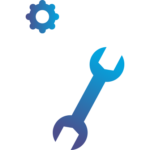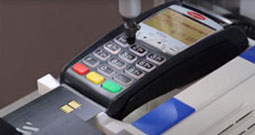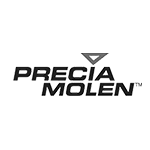REFURBISHED
ELECTRONICAL
DEVICE’S
TEST AUTOMATION


You refurbish electronic devices (payment terminals, smartphones) ?
You carry out test sessions when they arrive at the factory and before they are put back on the market ?
You are always confronted with subjectivity, flow variations and long processes.
Now you can test your equipment simply, quickly and efficiently.
Increase efficiency and reliability by automating the functional testing of your electronic equipment.
Increase the rate of the number of products tested (quick change of product, operator mobilised on higher value-added tasks).
Remove the subjectivity of your refurbished device’s diagnostic.
Customise your software and hardware functions.
Special case smartphone :
Optimise your test times by combining eTASQ Repair robot with the mobile application specially developped by PONANT Technologies.

SERVICIO 10
Fully automated execution of certified test suites










An automated test is a test that, unlike a manual test, does not require an operator to perform it.
This process is possible thanks to the creation of predefined test scenarios and automated tools that execute the test and deliver analysis reports.
The tools for test execution can be software dedicated to the test (in this case we talk about intrusive tests) or robots/instruments directly replacing the operators and using the operating interfaces of the product (screen, keyboard for man-machine interfaces).
The automated test brings a solution to human hazards (problem of vigilance, interest of the function and problem of attention) but also to physical difficulties for the operator on the repetition of the actions (musculoskeletal disorders, tediousness, boredom…). It allows to evaluate the quality of the end-user experience in a simple, fast, reliable and cost-effective way.
A human-machine interface is a set of screen, keyboard, indicator, button allowing a user, a physical person, to connect and interact with a system, a device or a machine.
Examples: a smartphone, a tablet, a car dashboard, a boiler control panel…
Each person comes across more than ten human-machine interfaces every day.
The human-machine interface test is a set of actions that aims to implement the functionalities proposed to the user.
This is to verify the proper functioning of the product in all its operating conditions. It also allows to define the simplicity and the performance of the system.
An integration test is preceded by a unit test that verifies the correct operation of a specific functionality.
The integration test is a test phase that verifies the operation of several units within the current project.
A functional test validates in a manual or automated way the different functionalities of a product and in particular its human-machine interface.
These functionalities are those established in the specifications.
An acceptance test, also called recipe, allows to demonstrate that the required functionalities and specifications work correctly while adapting to its future operating environment.
A regression test is a set of tests that are generally a simple, representative and quick sample to execute.
It allows to verify that the main functions of the equipment to be tested remain operational after a modification (software or hardware).
Regression tests are replayed to ensure that the software is working properly in general, and are generally followed by a complete functional test.
Before releasing a software product and performing a field test or beta test, the alpha test is the ultimate test performed by the test technicians on the development site after the acceptance tests.
During the alpha test, the product is put into real operating conditions in a sandbox environment.
The non-intrusive test is a test that is carried out under the same conditions as those of the product intended for the field.
No changes, modifications, tools or software and hardware additions are applied to the product to be tested for the passage of the tests.
Provisioning is the preparation of a product to put it in its future operating condition.
Provisioning is done product by product, and is generally different for each product. It is performed on a product ready to be delivered to a customer. Tools or manual operations are required to carry out this preparation (ex: entering the identifier of the future customer and activating services specific to him).
Provisioning can be performed by a dedicated tool, by an operator or by a generic robot using man-machine interfaces (ex: eTASQ Motion).